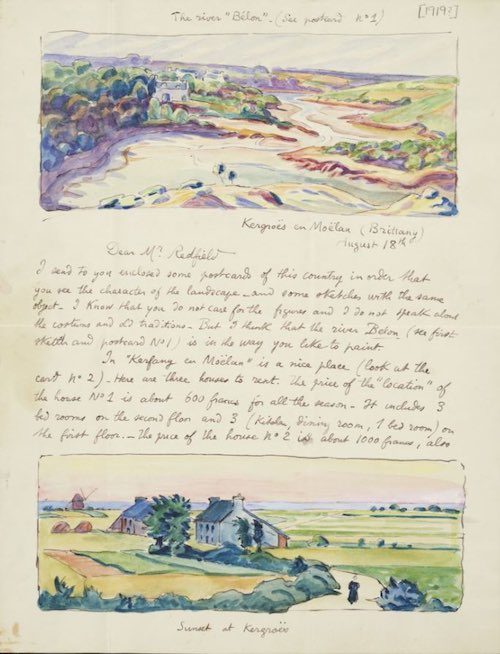7 Reasons to Keep Writing Letters
You don’t need a tablet, Bluetooth, or a new app for this activity — just a sheet of paper and a trusty pen. Keeping correspondence via snail mail is an especially fulfilling way to stay in touch with friends and family. Stripped of the immediacy and — sometimes — rashness of instant messaging, letter writing is expressive and therapeutic. The (almost) lost art deserves a reprise. Here are seven reasons you should write more letters.
1. Letters are personal. A handwritten note shows the recipient how much they mean to you. The journalist Phyllis Theroux wrote, “To send a letter is a good way to go somewhere without moving anything but your heart.” Regardless of the words on the page, the effort behind written correspondence sends a message in itself.
 2. You can practice your handwriting. Or show off your handwriting. There are too few opportunities to do either these days. You don’t have to write in cursive, but it would augment the aesthetic if you did.
2. You can practice your handwriting. Or show off your handwriting. There are too few opportunities to do either these days. You don’t have to write in cursive, but it would augment the aesthetic if you did.
3. You can keep your own history. Letters are responsible for a great deal of what we know about history. Saved letters tell a story, unlike deleted text messages and emails. In August, a stash of letters from WWII codebreaker Alan Turing was found at the University of Manchester. The discovery was unexpected but welcomed, as his letters focused largely on his work in computer science and early artificial intelligence. You might not have such consequential correspondence, but the details and personality in a hoard of letters can be treasured for generations.
4. You can add personalized art. Writing for snail mail allows you to personalize a note with hand-drawn artwork. The Smithsonian Institution’s exhibition, “More Than Words: Illustrated Letters…,” shows creative correspondence from artists and authors spanning from the late-1800s to the 1980s. The ink, watercolor, and pencil drawings in the collection show how graphics can enhance a personalized note.
5. The message will be more meaningful. Writing out your thoughts to someone will give you more clarity on what exactly you want to say. The opportunity to develop your message and voice over the course of a letter affords your recipient a richer experience. Spiritual teacher and author Barb Schmidt offers advice on writing letters, saying, “Place all of your attention on your letter’s recipient. What stands out about that person? Good memories? Shared accomplishments? Commonalities?” and “Thoughtfully reflect upon what you want to share with that person about yourself. What feelings do you wish to elicit? Love, support, humor, etc.?”
6. Letters are tangible. Correspondence you can see, touch, smell, and keep is a rarity anymore. A letter travels — sometimes — thousands of miles to arrive in someone’s hands. The entire experience encompasses the senses, and it doesn’t have to be lost to technology. The Post’s recent story, “The Digital Deluge,” tells of the pitfalls of a solely digital history record in a fast-paced world. The power and potential of technology can be staggering, but a lot is lost in the shuffle. Handheld keepsakes can be a simple and secure form of memory.

7. The recipient will thank you. There are few happy surprises tantamount to arriving home from a rough day and discovering a letter from a friend. If you give someone this joy, they will almost certainly return the favor. U.S. soldiers abroad often express gratitude for receiving mail from civilians, as in the case of Bianca Snow and Larry Nance, Jr. Snow was stationed in the Middle East when Nance began sending her letters in a pen pal program 14 years ago. They met for the first time this year at an LA Laker’s game; Larry Nance, Jr. was on the team. “Those letters got me thru,” Snow said online of their correspondence.